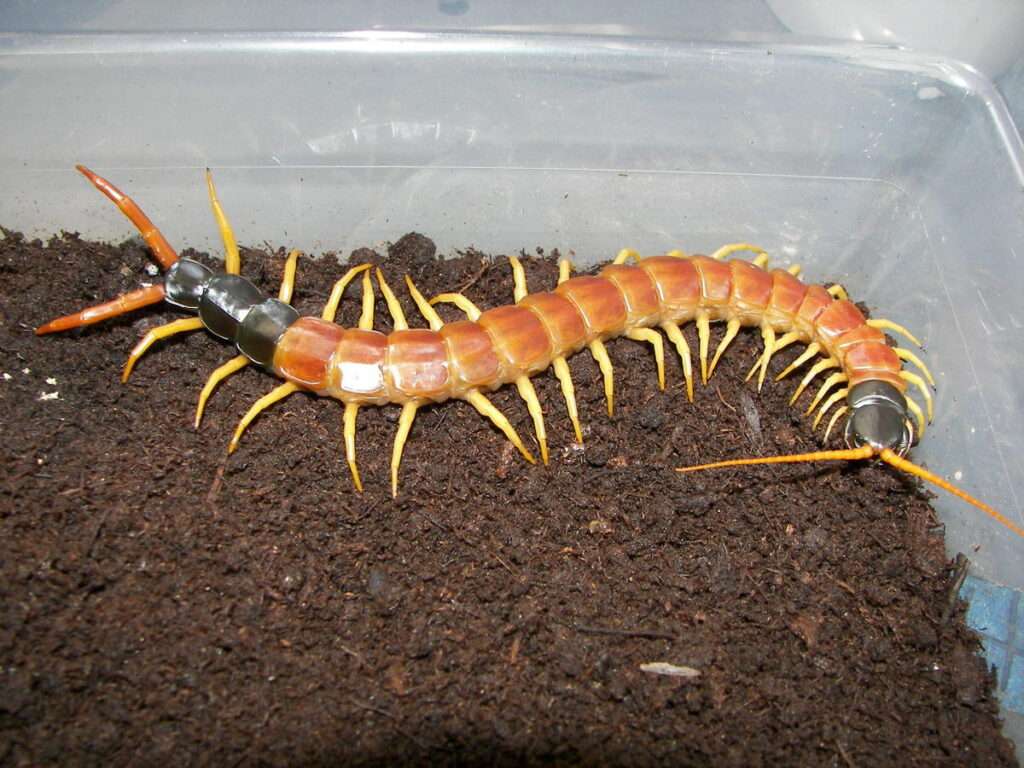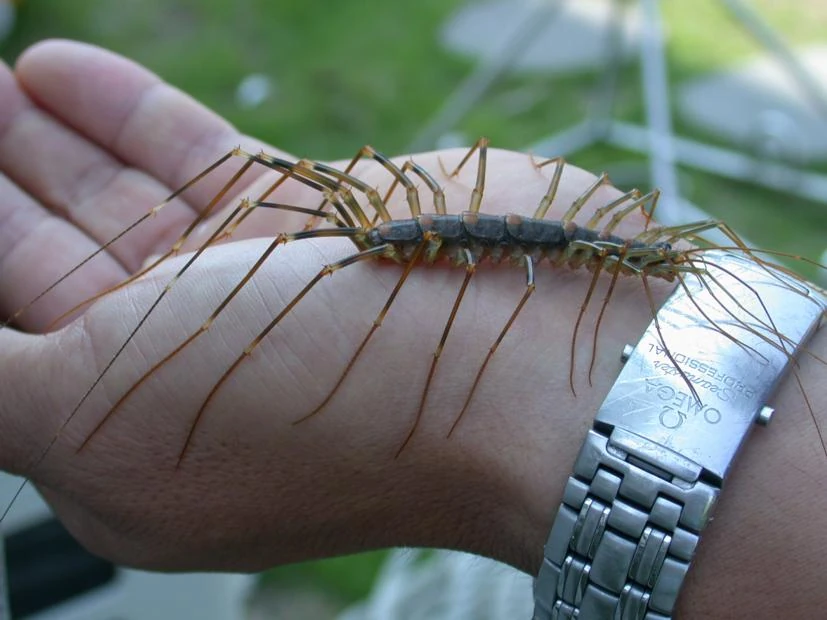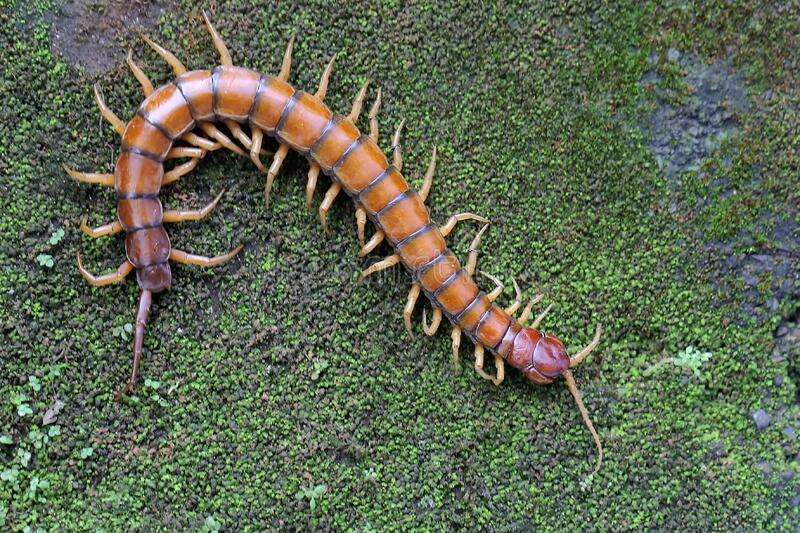
Scolopendra heros is a species of North American centipede that may be found in the Southwest of the United States and Northern Mexico. Despite only being present in two large places, the Giant Desert Centipede is recognized by a variety of names worldwide. It is frequently confused with the related Desert Centipede, but they differ from one another in a number of ways.
Appearance
Egg
A female can lay anywhere between 12 and 60 eggs during one reproductive cycle. They continue to gather in groups in hidden areas, safe from the female Giant Desert Centipede. These eggs are typically laid by the females in the summer or the autumn. She continues to keep watch until the hatchlings have gone through their second molting cycle.
Instar
The babies hatch from their eggs after two months. And the morphological characteristics of the hatchlings and those of an adult are essentially the same. Over the course of its life, which can last for almost ten years, the number of segments remains constant. To lose its exoskeleton, it does, however, go through the process of molting. They transition into a new stage called an instar after molting. Until they are old enough to mate, this process cycles back and forth a few times.
Adult
- A Giant Desert Centipede can grow up to 6.5 inches in length as an adult, but if left in the wild, it can reach 8 inches. It is North America’s biggest centipede.
- Their body is divided into segments, and their skull is rounded and flattened. They have antennas on their head to aid in navigating their surroundings. They lack eyeballs, which explains why.
- Sometimes, the initial segment of their segmented body and their head are both orange in hue. Because of this, they go by the names “Giant Redheaded Centipede” or “Texas Redheaded Centipede” in different places. But they do come in various shades.
- They have roughly 26 to 30 body segments, each of which is equipped with two legs. On occasion, it can be challenging to distinguish between the mouth and the tail. Their bodies are frequently greenish black and their legs are typically yellow. They feature two pairs of pinch-able maxillae and a pair of lengthy, extended mandibles.
- Around 20 pairs of legs and a pair of rear legs are present on each centipede. They might have 21 to 23 pairs of legs altogether.
- The injectors on their front limbs contain venom that can be used to help bring the prey to the ground.

Geographic Location
Despite only being found in two nations, the Giant Desert Centipede has a sizable population. It is primarily found in Arkansas, Southern Missouri, Louisiana, Kansas, Oklahoma, Texas, New Mexico, Arizona, and Northern Mexico, among other major geographic areas.
Habitat
Any location with shelter is acceptable for them to settle. They keep underground during the warmer months and are frequently spotted outside when it’s gloomy. They can be found in rocky woodlands, under rocks, in potted plants, in spaces with decaying wood, and other places.
What foods do giant desert centipedes consume?
The giant desert centipede is a carnivore. They can reach out in the air to eat small insects and utilize poison to seek down their food. Due to their bigger size, centipedes can consume small amphibians and vertebrates.
Life Cycle
From eggs, S. heroes emerge. Like all arthropods, they shed and molt away their exoskeleton as they develop and reach adulthood. They move into a new stage of their life cycle known as an instar each time they molt. They have the same number of segments their entire lives, much as all Scolopendromorph centipedes. S. heros is a species with modest growth that can live for more than ten years.
Venom
Are they dangerous?
- The Giant Desert Centipede has a moderately hostile disposition. Despite being poisonous, it merely uses its venom to pacify its prey. Insects’ nervous systems can be paralyzed by the venom, which makes it harder for them to flee. Smaller vertebrates follow the same rules.
- The venom’s effects on other animals, such as humans, have varied. After being stung by a Giant Desert Centipede, a rat displayed excruciating discomfort before returning to normal after a few hours.
- Similar to how it attacked humans, its bite only resulted in bruising and excruciating pain. This subsided after a few hours and hasn’t yet resulted in any fatalities or deaths. Due to its fast disintegration, the venom of the Giant Desert Centipede has not been extensively researched. But it hasn’t appeared to pose much of a threat.
Keeping as Pet
Housing
Ideal conditions are for a sizable cage with a deep (4″+) substrate of moist sand and peat moss. Only the tips of the back legs or the antennae of this species will protrude above the substrate for the most of the time. Offer some strategically placed cork bark, bark, or a robust slate shelter as well to hold the specimens in place.
Humidity and Temperature
The Giant Desert Centipede will thrive in the 80° to 85° F range and with a humidity of 50–65%, as is expected for a desert species. Environment Setup: Centipede and Millipede Care for additional details.
Care of Cage
Cleaning up any uneaten prey the day after feeding your centipede is a good practice to get into because decomposing organic matter frequently draws mites, fungi, mold, and other potentially hazardous creatures into the cage. If your pet has just recently molted, get rid of any uneaten prey right away. Centipedes that have just molted are vulnerable until their exoskeletons become solid.
Feeding and Food
Young, small animals consume pinhead crickets and other tiny insects. As adults, they will consume anything smaller than themselves, such as big crickets, cockroaches, and even fuzzy or pink mice. However, it is typically advised against feeding prey that is longer than half the centipede’s length. Once each week, feed the crickets and roaches. Feed a tiny pink mouse once every month. Remember that invertebrates that are overfed, particularly overfed centipedes, appear to pass away considerably sooner than those that are kept “thin and mean.”
Behavior
The centipede frequently roams the entire space when first introduced to a new habitat. Once established, however, it will spend the majority of its time submerged in the substrate. You will only be able to see its antennae or the tips of its rear legs above ground. The cage can be equipped with a red or blue light that can be turned on at night to allow observers to see the centipede hunting for prey and exploring its surroundings, even though they are concealed during the day.
Handling
It is not advisable to handle any centipedes. All Scolopendra are capable of delivering an extremely severe venomous “pinch,” notwithstanding pictures of “daredevils” handling big specimens. Keepers of large Scolopendra species should be extremely cautious, especially if they have a history of insect venom reactions or have young children. Large specimens should be regarded as medically serious.
Table





